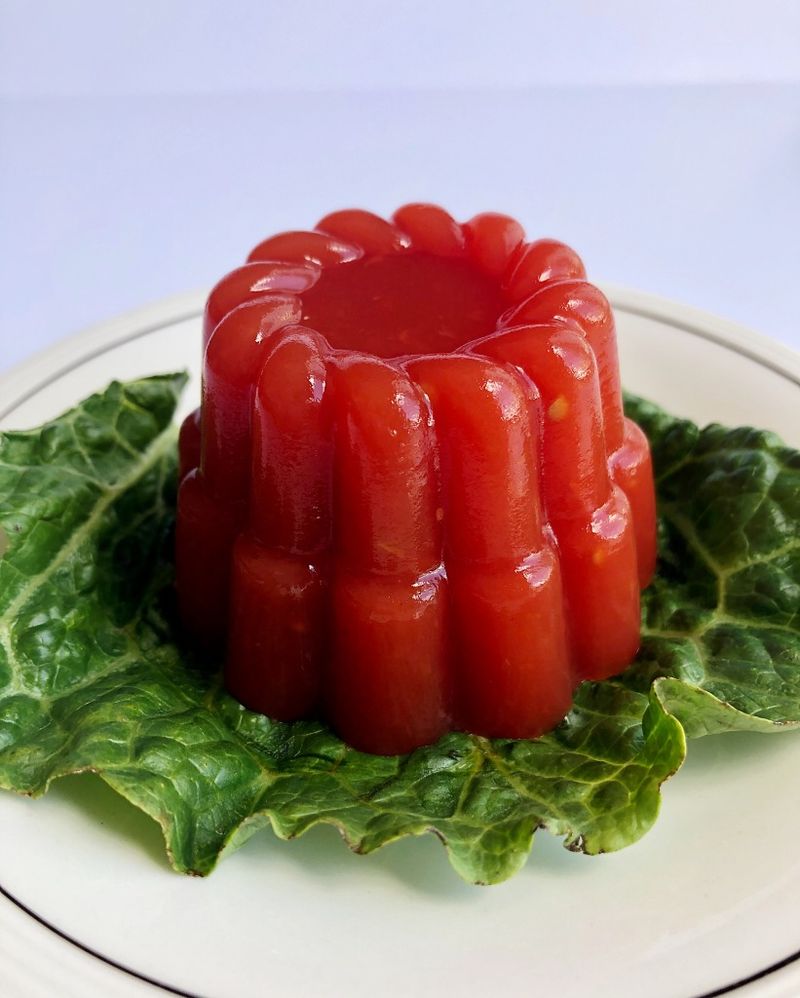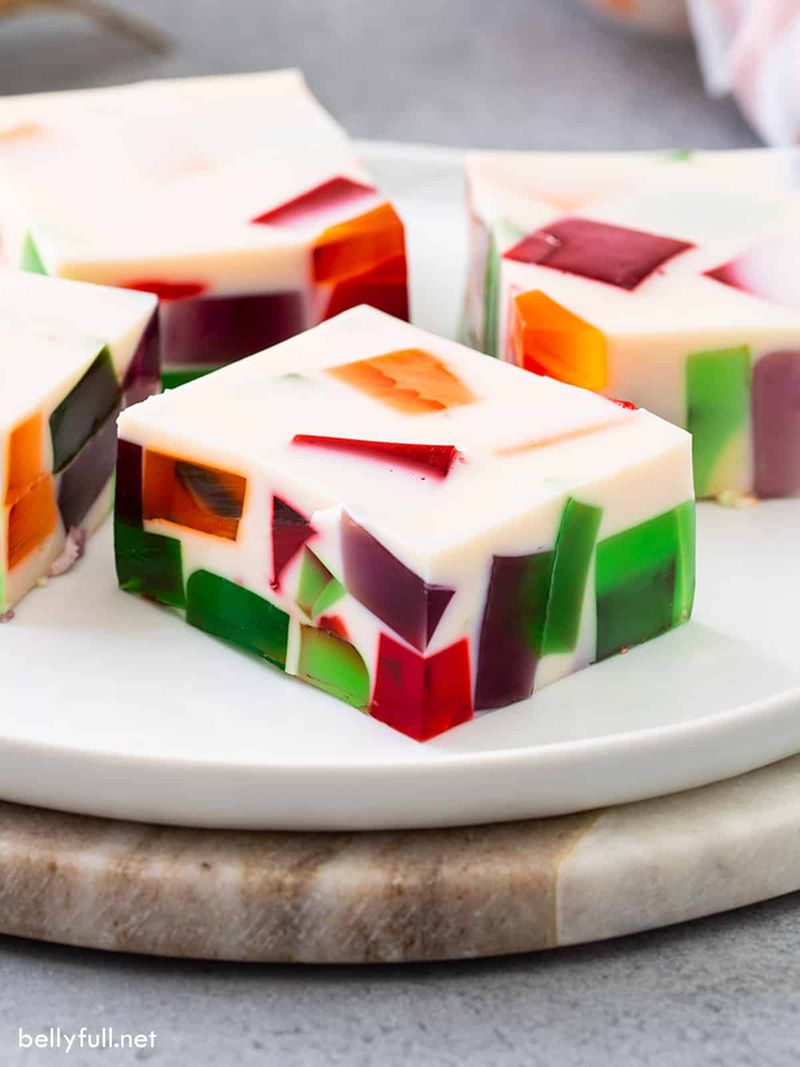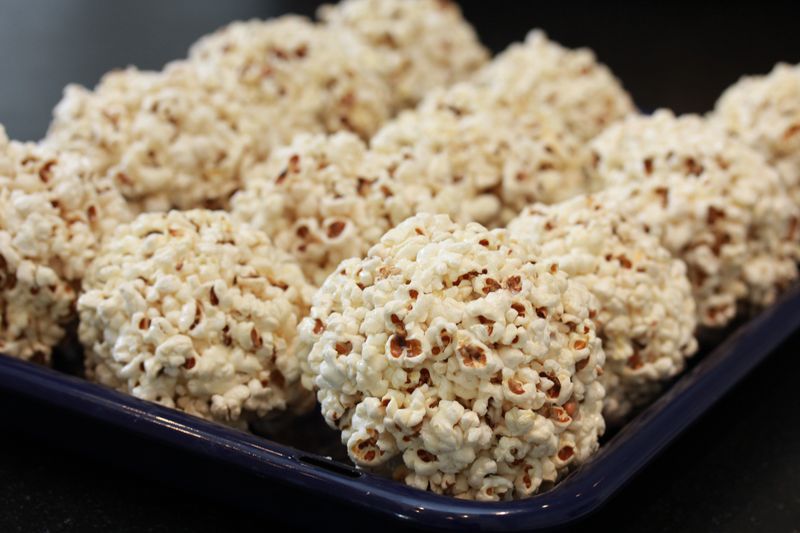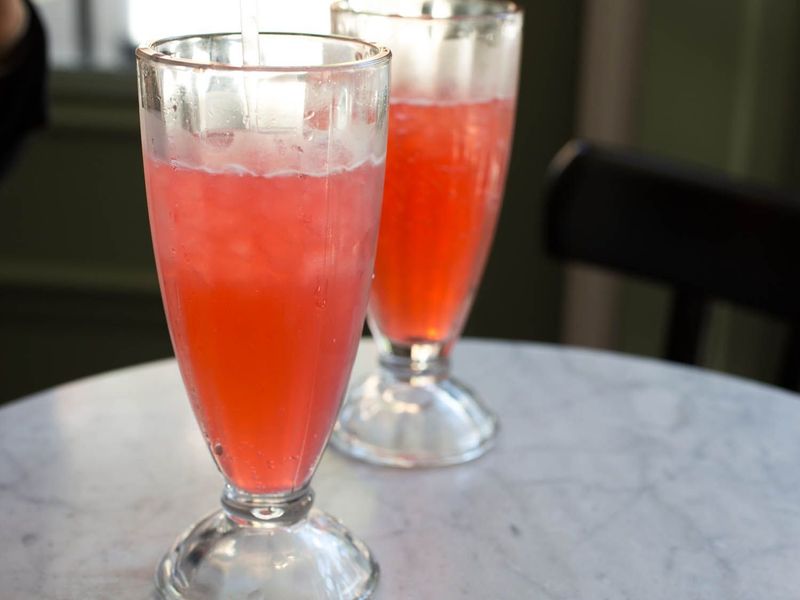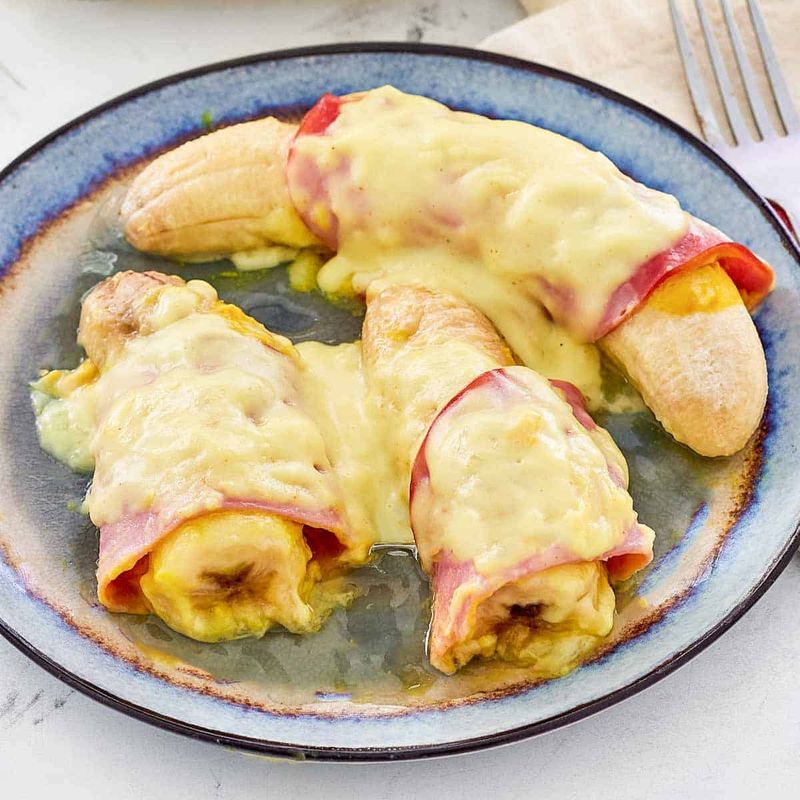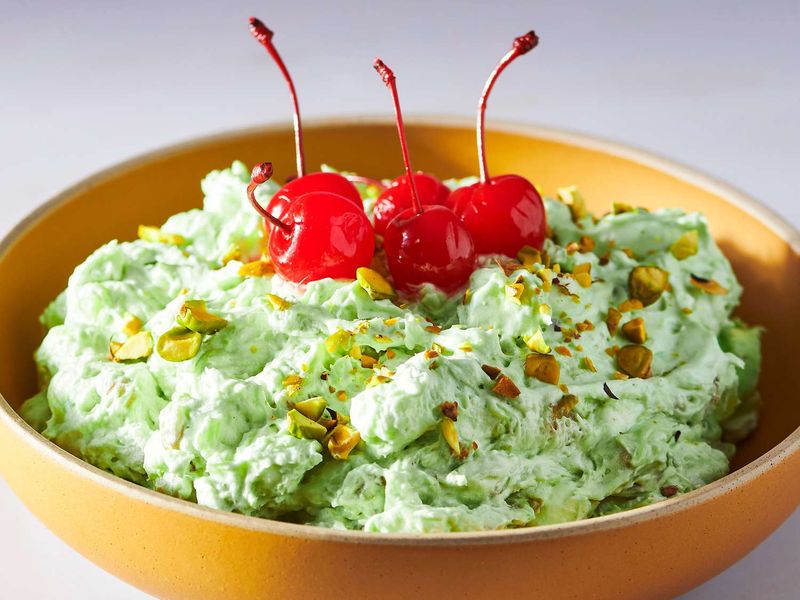America has created some truly unique foods and drinks that never quite made it to international fame.
From wobbly gelatin concoctions to bizarre flavor combinations, these forgotten treats tell the story of American food innovation and changing tastes.
Take a nostalgic trip down memory lane with these 13 uniquely American culinary creations that the rest of the world missed out on.
1. Tomato Aspic: The Fancy Jello Nobody Misses
Grandma’s dinner parties weren’t complete without this wiggly tomato creation. A savory gelatin mold combining tomato juice, vegetables, and occasionally olives or celery, it was the height of sophistication in mid-century America.
Served chilled on lettuce leaves, this dish represented culinary refinement despite essentially being cold tomato jello. While occasionally spotted at Southern gatherings, this once-prestigious appetizer has largely disappeared from American tables.
2. Jell-O Cottage Cheese Salad: The Lime Green Mystery
Fluorescent green and studded with chunks of cottage cheese, this technicolor creation bewildered later generations. Combining lime Jell-O, cottage cheese, crushed pineapple, and sometimes nuts, it appeared at countless potlucks between 1950-1975.
Neither truly a salad nor a dessert, it occupied a confusing middle ground on dinner tables. Baby boomers might remember their mothers proudly bringing this to church socials, while their children wondered why anyone would mix dairy with gelatin.
3. Hoover Stew: Depression-Era Necessity
Named after President Herbert Hoover during the Great Depression, this budget-stretching meal combined macaroni, sliced hot dogs, canned tomatoes and corn. Scout camps and cash-strapped families relied on this affordable one-pot wonder.
The recipe emerged from soup kitchens when feeding many with little became essential. Unlike many vintage recipes, Hoover Stew wasn’t quirky or trendy—it was pure survival food that faded as prosperity returned, living on mainly in depression-era cookbooks and family stories.
4. Deviled Ham Sandwich Spread: Canned Mystery Meat
Those distinctive paper-wrapped Underwood cans held America’s favorite potted meat product. Ground ham mixed with spices, mayo, and mysterious seasonings created a spreadable concoction perfect for quick sandwiches.
Before fancy lunch meats became affordable, this pinkish paste was a lunchbox staple across middle-class America. While technically still available today, few millennials have experienced the uniquely salty, processed flavor that defined countless childhood lunches for previous generations.
5. Crown Jewel Gelatin Salad: Stained Glass Dessert
Looking like edible stained glass, this labor-intensive dessert showcased multicolored cubes of gelatin suspended in creamy white jelly. Homemakers would spend days cutting different flavored Jell-O into perfect cubes before trapping them in sweetened condensed milk gelatin.
Holiday tables weren’t complete without this showstopper that required serious patience and precision. The impressive visual payoff made the effort worthwhile in an era when homemaking skills were highly valued and food coloring was considered perfectly acceptable.
6. Popcorn Balls: Halloween’s Homemade Treat
Before pre-packaged candies dominated Halloween, neighborhood children eagerly anticipated homemade popcorn balls. These sticky spheres of popcorn held together with corn syrup were often dyed festive colors for the season.
Mrs. Johnson down the street might be known for her perfect orange-tinted treats. Modern parents would be horrified at the thought of children accepting unwrapped homemade food from neighbors, but until the 1970s, these chewy, sweet creations were Halloween highlights.
7. Baked Macaroni Loaf: Sliceable Pasta
Imagine macaroni and cheese you could slice like bread! This practical creation bound leftover pasta with eggs, milk, breadcrumbs and cheese, then baked until firm enough to cut into neat slices.
Post-war homemakers appreciated how it transformed leftovers into a presentable new meal. The loaf was often served with tomato sauce or creamed vegetables. This economical dish exemplified mid-century American ingenuity before disappearing almost completely from our culinary landscape.
8. Chicken-in-a-Biskit Crackers: Powdered Poultry Snacks
The mysterious orange dust coating these crackers delivered an unmistakable artificial chicken flavor that Americans oddly craved. Not quite savory, not quite sweet, these snacks occupied a unique flavor territory that defied explanation.
Nabisco introduced them in 1964, and they became a staple at bridge clubs and cocktail parties. While technically still available, their popularity has dramatically declined. Modern consumers typically prefer either clearly sweet or obviously savory snacks, not the strange middle ground these occupied.
9. Whistle Orange Soda: The Midwestern Fizz That Fizzled
Before national soda brands dominated, Whistle Orange Soda reigned supreme across the Midwest. With its distinctive orange flavor and memorable bottle, this regional favorite competed with big names like Orange Crush.
Children would beg for its sweet, tangy taste at soda fountains and grocery stores alike. Despite fierce loyalty from fans, Whistle couldn’t withstand the marketing muscle of national brands. By the 1980s, this once-beloved orange soda had all but vanished from American refrigerators.
10. Bonomo Turkish Taffy: The Smack-It-To-Eat-It Candy
Despite its name, this uniquely American candy had nothing to do with Turkey. The stretchy, chewy confection came in vanilla, chocolate, strawberry, and banana flavors, packaged in iconic colorful wrappers.
Kids would smack the bar against a hard surface to shatter it into bite-sized pieces. A fixture at movie theaters and penny candy stores throughout the mid-20th century, Bonomo briefly returned in 2010 but failed to recapture its former glory among a generation raised on extreme sour candies and complex flavors.
11. Lime Rickey: The Forgotten Soda Fountain Star
Long before artisanal beverages became trendy, the Lime Rickey reigned supreme at American soda fountains. This tart, refreshing concoction mixed fresh lime juice, seltzer water, and simple syrup, sometimes with a splash of cherry.
Named after Colonel Rickey (a lobbyist, not a military man), it became the sophisticated alternative to sweeter sodas in the 1920s-40s. While the cocktail version with gin lives on in some bars, the innocent soda fountain original has largely disappeared except in a handful of nostalgic diners preserving vintage recipes.
12. Ham and Banana Hollandaise: The Dinner Party Disaster
Perhaps the most bewildering creation from 1960s recipe cards, this dish wrapped bananas in ham slices, baked them, then smothered everything in hollandaise sauce. McCall’s magazine actually published this recipe, suggesting it for elegant entertaining.
The bizarre sweet-savory combination represented America’s mid-century fascination with exotic (but completely misunderstood) tropical ingredients. Home cooks genuinely served this to guests, likely accompanied by uncomfortable smiles. Even nostalgic food historians agree this creation deserved its extinction.
13. Watergate Salad: The Scandalously Green Fluff
Named after the infamous political scandal, this strange concoction combined instant pistachio pudding, canned crushed pineapple, miniature marshmallows, and Cool Whip. The result was a fluffy, mint-green side dish that defied categorization.
Kraft Foods introduced it in the 1970s as “Pistachio Pineapple Delight,” but Americans quickly renamed it. Despite its questionable appearance, the sweet, nutty flavor made it a potluck favorite. While still occasionally spotted at Midwestern gatherings, younger generations largely view it as a bizarre relic of questionable culinary judgment.

